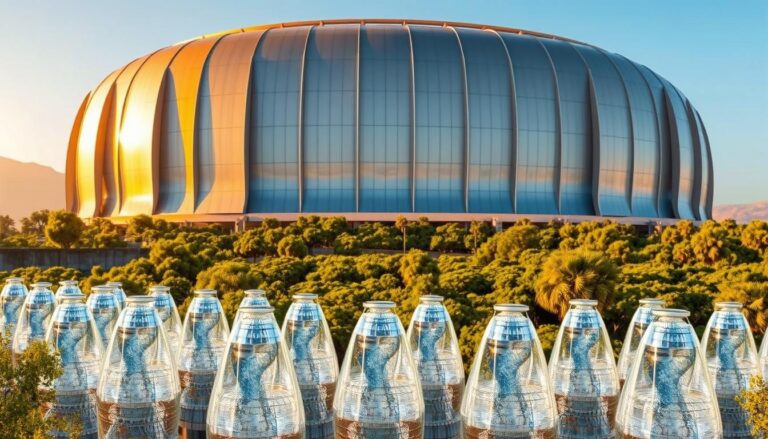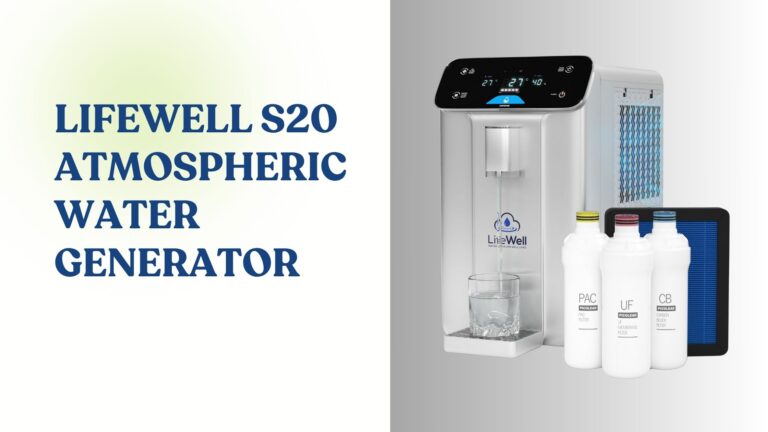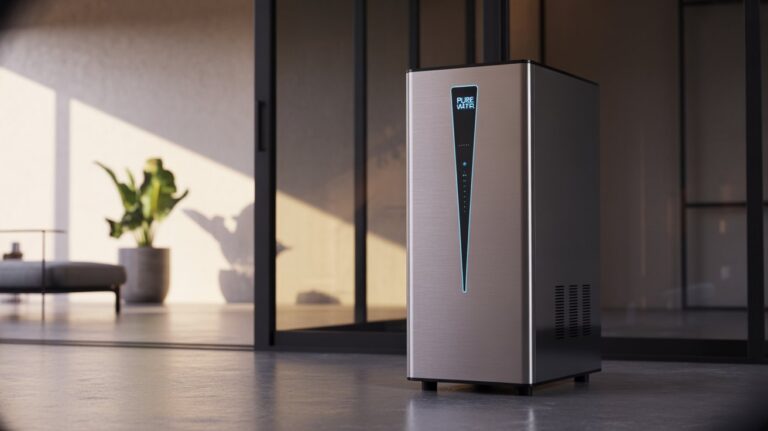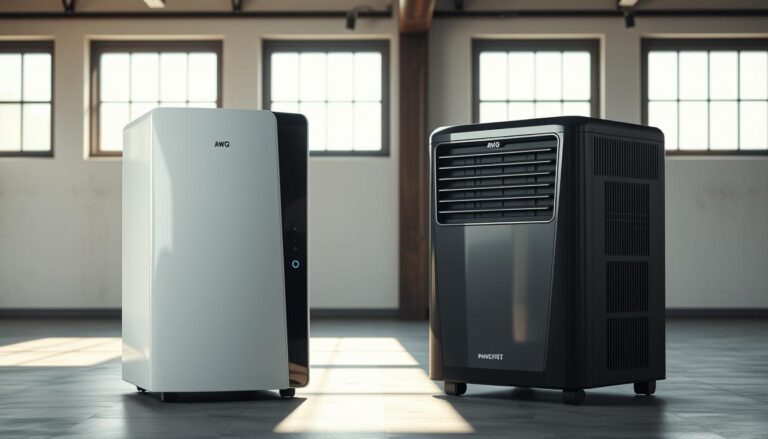Exploring the Benefits of Atmospheric Water Generators
Key Takeaways
- The demand for clean water is growing, and atmospheric water generators offer a sustainable solution.
- Atmospheric water generators extract water from the air, providing a renewable source of clean drinking water.
- These generators work by condensing moisture in the air and then filtering it to produce pure, drinkable water.
- The advantages of atmospheric water generators include independence from traditional water sources and reduced environmental impact.
- This technology can improve access to clean water in remote areas, address water scarcity, and reduce reliance on drought-affected regions.
The Growing Demand for Clean Water
The global population is steadily increasing, leading to a higher demand for clean and accessible water. As the world’s population continues to grow, the strain on traditional water sources, such as groundwater and surface water, is becoming increasingly apparent. These traditional sources are becoming scarce due to factors like climate change, pollution, and overexploitation. The need for innovative solutions to address this pressing issue has never been more urgent.
Recognizing the growing demand for clean water, it is crucial to explore alternative and sustainable water sources that can meet the needs of the global population. One such promising solution is the use of atmospheric water generators (AWGs), which have the potential to revolutionize the way we access and manage water resources.
Understanding Atmospheric Water Generators
Atmospheric water generators are devices that extract water from the air, providing a sustainable and renewable source of clean water. These innovative technologies utilize advanced techniques, such as condensation and adsorption, to capture and purify water from the atmosphere. By harnessing the abundant water resources present in the air, AWGs offer a unique and promising approach to addressing the global water crisis.
The underlying principles behind atmospheric water generators are rooted in the science of thermodynamics and humidity levels. These devices work by drawing in ambient air, cooling it to the dew point, and then collecting the condensed water for purification and storage. This process allows AWGs to extract clean water from the atmosphere, even in regions with relatively low humidity levels.
How Atmospheric Water Generators Work
The inner workings of atmospheric water generators are a testament to the ingenuity of modern engineering and technology. These devices rely on the principles of thermodynamics and humidity levels to extract water from the air. The process begins with the intake of ambient air, which is then cooled to the dew point, causing the water vapor in the air to condense. The condensed water is then collected and undergoes a purification process to ensure its quality and safety for human consumption or other applications.
The efficiency and effectiveness of atmospheric water generators are continuously being improved through advancements in materials science, energy efficiency, and scalability. As the technology matures, AWGs are becoming increasingly capable of producing larger quantities of clean water, making them a more viable and widespread solution for addressing global water challenges.
The Advantages of Atmospheric Water Generators
| Metrics | Benefits |
|---|---|
| Water Production | Generates water from the air, reducing reliance on traditional water sources |
| Energy Efficiency | Uses renewable energy sources for water production, reducing carbon footprint |
| Cost Savings | Reduces costs associated with purchasing and transporting bottled water |
| Water Purity | Produces high-quality, purified water without the need for additional filtration |
Atmospheric water generators offer a range of advantages that make them a compelling solution for addressing the growing demand for clean water. One of the primary benefits is their ability to provide a reliable and consistent source of clean water, independent of traditional water infrastructure. This is particularly valuable in regions where access to clean water is limited or where traditional water sources are scarce.
Furthermore, AWGs can be deployed in a wide range of environments, from urban areas to remote and off-grid locations. This versatility allows these devices to be utilized in diverse settings, expanding the reach and accessibility of clean water to communities that may have previously lacked such resources.
Reducing Reliance on Traditional Water Sources
By utilizing atmospheric water as a source, atmospheric water generators can help alleviate the strain on groundwater and surface water resources. This reduction in reliance on traditional water sources can contribute to the long-term sustainability of water management, as it helps to preserve and protect these vital natural resources.
As the global population continues to grow and the impacts of climate change become more pronounced, the need to find alternative water sources becomes increasingly urgent. Atmospheric water generators offer a promising solution that can help address this challenge by tapping into the abundant water resources present in the atmosphere. By reducing the burden on traditional water sources, AWGs can play a crucial role in ensuring the long-term availability and sustainability of water supplies.
Improving Access to Clean Water in Remote Areas
In regions with limited access to clean water, atmospheric water generators can provide a viable solution to address water scarcity. These devices can be deployed in remote communities, enabling access to clean water without the need for extensive infrastructure. This is particularly beneficial in areas where traditional water distribution systems are not feasible or cost-effective to implement.
By harnessing the water resources present in the atmosphere, AWGs can bring clean water to communities that have historically struggled with water access. This can have a transformative impact on the lives of individuals and communities, improving health, sanitation, and overall quality of life. As the technology continues to evolve and become more accessible, the potential for AWGs to bridge the gap in water access becomes increasingly promising.
Addressing Water Scarcity and Drought
As climate change exacerbates water scarcity and drought, atmospheric water generators can play a crucial role in mitigating the impact. By tapping into the abundant water resources in the atmosphere, AWGs can provide a reliable and sustainable source of clean water, even in regions where traditional water sources are scarce or unreliable.
In the face of increasingly unpredictable weather patterns and prolonged periods of drought, the ability to extract water from the air becomes a valuable asset. Atmospheric water generators can help communities adapt to these changing conditions, ensuring that they have access to the water they need to sustain their livelihoods and meet their daily needs.
Furthermore, the deployment of AWGs can contribute to the overall resilience of water management systems, as they offer a decentralized and distributed approach to water supply. This can help communities better withstand the challenges posed by water scarcity and drought, reducing their vulnerability and enhancing their ability to cope with these environmental stresses.
The Environmental Benefits of Atmospheric Water Generators
Atmospheric water generators offer significant environmental benefits compared to traditional water supply systems. These devices operate without the need for energy-intensive water treatment processes, reducing the carbon footprint associated with the production and distribution of clean water.
By harnessing the water resources present in the atmosphere, AWGs can contribute to the overall sustainability of water management. This approach aligns with global efforts to address environmental challenges, as it reduces the strain on natural water resources and minimizes the environmental impact of water supply systems.
Moreover, the deployment of atmospheric water generators can have a positive ripple effect on other environmental aspects, such as energy consumption and greenhouse gas emissions. As the technology continues to evolve and become more energy-efficient, the environmental benefits of AWGs are expected to become even more pronounced.
The Future of Atmospheric Water Generation Technology
The future of atmospheric water generation technology is filled with exciting possibilities and advancements. As the field of materials science, energy efficiency, and scalability continues to progress, the capabilities of atmospheric water generators are poised to expand significantly.
Researchers and engineers are constantly working to improve the performance, cost-effectiveness, and accessibility of AWGs. Advancements in materials used for the condensation and purification processes, as well as improvements in energy efficiency, are driving the continued development of this technology.
As the technology matures, atmospheric water generators are expected to become an increasingly viable and widespread solution for addressing global water challenges. The potential for AWGs to play a crucial role in ensuring water security and sustainability is immense, and the future of this innovative technology holds great promise for the well-being of communities around the world.
Frequently Asked Questions
What is an Atmospheric Water Generator (AWG)?
An Atmospheric Water Generator (AWG) is a device that extracts water from the air by condensing water vapor. It uses a combination of refrigeration and condensation to produce clean, drinkable water.
How does an Atmospheric Water Generator work?
An AWG works by drawing in air, which is then cooled to the point where the water vapor in the air condenses into liquid water. The water is then filtered and treated to ensure it is safe for consumption.
What are the benefits of using an Atmospheric Water Generator?
Some benefits of using an AWG include its ability to produce clean drinking water from the air, its independence from traditional water sources, and its potential to provide water in areas with limited access to clean water.
Is the water produced by an Atmospheric Water Generator safe to drink?
Yes, the water produced by an AWG is safe to drink. It goes through a filtration and treatment process to ensure it meets safety standards for consumption.
Can Atmospheric Water Generators be used in areas with high humidity?
Yes, AWGs can be particularly effective in areas with high humidity, as there is more water vapor in the air for the device to extract and condense into liquid water.
Are there any limitations to using an Atmospheric Water Generator?
One limitation of using an AWG is that it requires electricity to operate, so it may not be suitable for areas with unreliable power sources. Additionally, the initial cost of purchasing an AWG may be a barrier for some individuals or communities.








